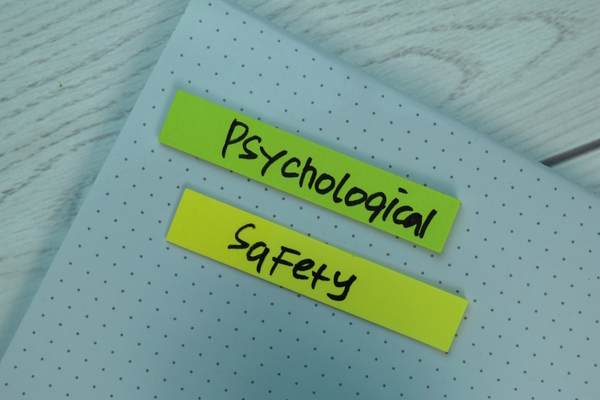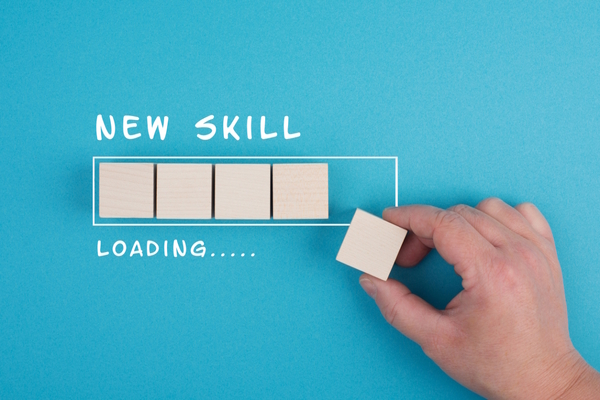Boredom: even more damaging than stress
In the workplace, overstimulation gets more attention than understimulation. But, says Nick Marks at Friday Pulse, the data suggests it is boredom, not stress, that most undermines wellbeing, performance and creativity

When leaders think about workplace risk, stress is often at the top of the list. And rightly so: chronic stress damages health, drains morale, and fuels turnover. But there is another, quieter risk that is just as corrosive, and in many cases more so: boredom.
Boredom doesn’t make headlines in the same way stress does. It lurks in the middle ground of “OK” - work that is neither fulfilling nor actively distressing. On the surface, things look fine. But scratch deeper and you find disengagement, fatigue, and stagnation.
In my research, boredom has consistently proved more damaging to workplace happiness and performance than stress. In fact, statistical analysis of UK workforce surveys shows that boredom has a four-times stronger negative impact on happiness at work than stress (Marks, N. 2025. Happiness is a Serious Business; Rethink Press. p 43). Moderate stress, managed well, can even provide a sense of challenge. But persistent boredom quietly drains energy, leading people to switch off long before they switch jobs.
Why we need both stability and change
To understand why boredom bites so hard, it helps to step back. Human beings need both stability and change. Too much change leaves us unsettled and exhausted. Too much stability tips into monotony and stagnation. Happiness arises when there is balance between the two - enough safety to feel grounded, and enough challenge to feel alive.
Emotions play a crucial role in navigating this balance. Sustaining emotions such as feeling calm, connected, and content helps us recover from pressure and gives us stability. Striving emotions such as feeling interested, enthusiastic and excited pull us forward into growth and achievement. At work, both are essential. Striving drives achievement and productivity, while sustaining builds teamwork and staff retention.
Boredom signals that the striving system has flatlined. Energy and focus stall, and momentum is lost. At work, the result is disengagement and poor performance – sometimes later leading to an increase in stress when business goals aren’t met.
Stress: dangerous in excess, useful in moderation
This is not to say stress doesn’t matter. Chronic stress that overwhelms capacity is highly damaging. It triggers burnout, with symptoms of exhaustion, cynicism and reduced effectiveness. But at moderate levels, stress is not always harmful. A degree of challenge can sharpen focus, increase motivation, and build capacity.
This nuance matters. Leaders often strive to eliminate stress entirely, but that is neither possible nor desirable. The goal is not zero stress, but healthy stress: enough challenge to stimulate, not so much that it overwhelms.
Boredom, by contrast, rarely carries any hidden upside. It is the slow erosion of engagement. A bored workforce is not just unmotivated; it is under-stimulated, under-creative, and underperforming.
The link to creativity and innovation
Creativity shows why boredom can be more damaging than stress. Negative emotions rarely spark innovation. Positive ones - feeling energised, connected and inspired -broaden thinking and open the way to fresh solutions.
Classic experiments in psychology show that people in a positive mood are 3 to 4 times more likely to solve creative problems than those in neutral or negative moods. A large in-depth diary study that tracked people’s daily work showed that the effects of a good mood go further than we think. It revealed that feeling good today leads people to being more creative tomorrow, and even the next day. Whilst they noted that being creative was linked to people’s mood on the day, there was no impact on how they felt the next day.
This shows that it is positivity that drives creativity. It also seems to provide evidence of a slightly mysterious phenomenon that we are all aware of: if we sleep on a problem, we often wake with a fresh idea about how to solve it. Quite possibly, this highly productive unconscious process is also aided by us feeling good. That makes intuitive sense, as nightmares clearly arise out of psychological dis-ease, so why shouldn’t the opposite be true, that positive imaginations arise out of psychological ease?
This all matters for business because creativity is not a luxury. It underpins innovation, problem-solving and adaptability. An EU study found that more than 80% of jobs require some creativity, whether it’s solving unforeseen problems or applying original ideas.[2] If boredom is pervasive, creativity flatlines and so does innovation.
From “fired up” to “burnt out”
Some may argue that boredom is preferable to burnout. After all, a burnt-out employee may collapse under the strain, while a bored one can still plod along. But this is a false comfort.
Burnout is a crisis; boredom is a chronic condition. Both drain performance, but boredom does so more insidiously. A disengaged team may look stable from the outside, yet they are delivering far below potential. Worse, the longer boredom persists, the harder it becomes to reignite energy.
The real solution lies in improving team happiness. Teams that feel positive and engaged are not only less prone to burnout, but they are also far less likely to drift into boredom. Happiness doesn’t just protect against problems - it unlocks the energy and creativity needed to thrive.
What leaders can do
Having worked with hundreds of organisations and thousands of teams, I’ve found the most effective solution is surprisingly simple: make team happiness a weekly habit. Once a week, take the pulse of how people are feeling - what’s going well, and where frustrations are building. Then get teams to meet briefly to celebrate wins, tackle issues, and agree one or two small actions. Done consistently, this rhythm – which I call Measure-Meet-Repeat - reduces friction, increases flow, and builds trust.
The goal isn’t to eliminate stress or manufacture excitement, but to create the conditions where people feel connected, valued, and able to perform at their best. Over time, these short weekly check-ins compound into stronger relationships, higher retention, and better results. It’s not a gimmick. It’s a practice that keeps teams energised, aligned, and resilient in the face of change.
Taking boredom seriously
Boredom is more damaging than stress because it erodes the very conditions people need to thrive: energy, creativity, and collaboration. Stress, if allowed to overwhelm, is clearly harmful. But at manageable levels, it can sharpen focus and spur action. Boredom, by contrast, only dulls and disengages.
Leaders should take understimulation seriously - not just as a wellbeing issue but as a performance risk. In the long run, the cost of boredom and disengagement is far higher than the occasional cost of pressure.
Nic Marks is the author of the book Happiness is a Serious Business and the founder of Friday Pulse, a London-based tech company helping organisations measure and improve team happiness
Main image courtesy of iStockPhoto.com and Pheelings Media

Business Reporter Team
You may also like
Most Viewed
Winston House, 3rd Floor, Units 306-309, 2-4 Dollis Park, London, N3 1HF
23-29 Hendon Lane, London, N3 1RT
020 8349 4363
© 2025, Lyonsdown Limited. Business Reporter® is a registered trademark of Lyonsdown Ltd. VAT registration number: 830519543





